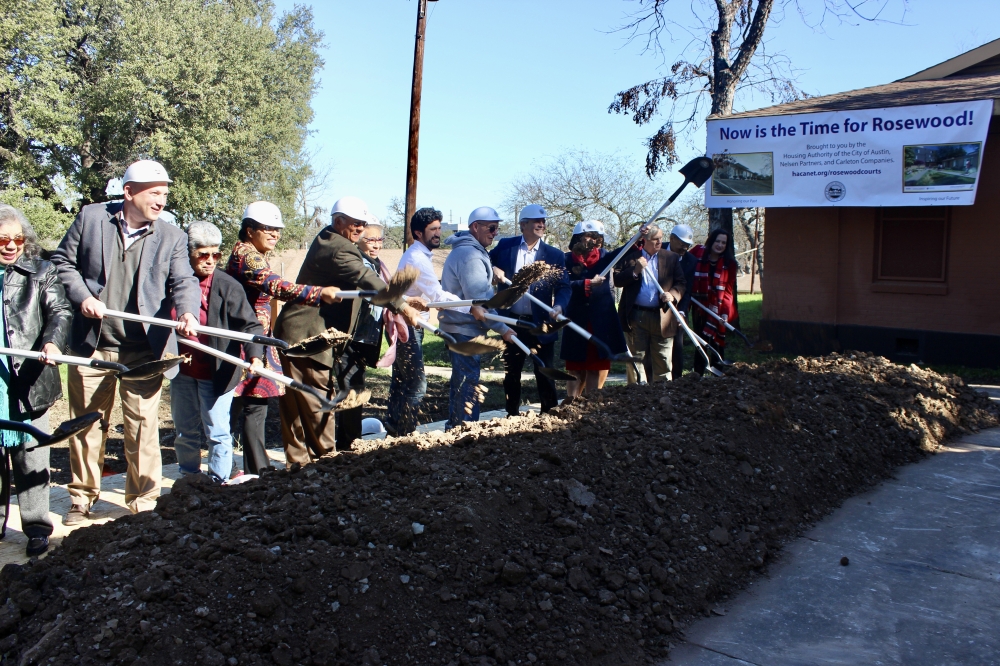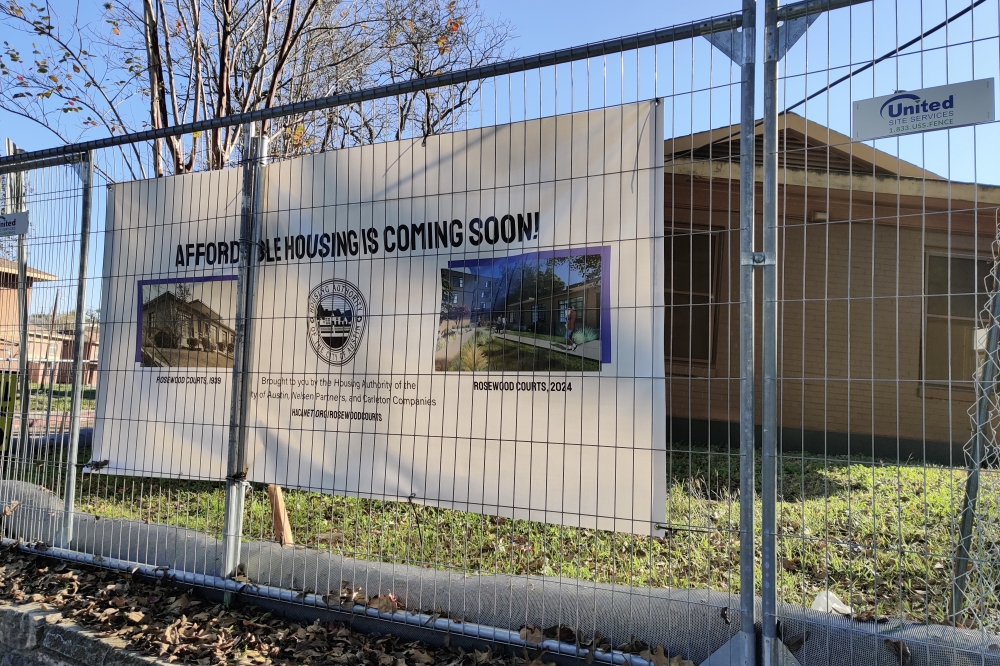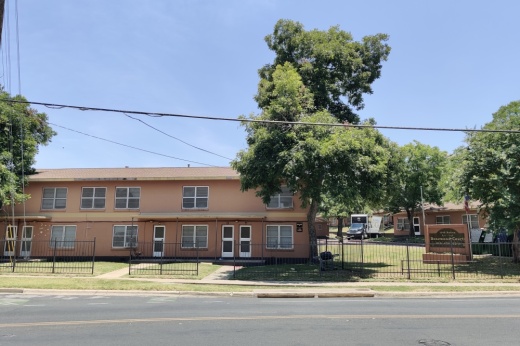Expansion and renovation work by the Housing Authority of the City of Austin and developer Carleton Companies will produce the Pathways at Rosewood Courts, a new development with 184 new income-restricted units ranging from studios to four bedrooms. Additionally, eight of the project's original 1930s-era apartment buildings will be restored and reopened with 20 modernized units. The complex will also include a block of 12 affordable townhomes.
Pathways at Rosewood Courts will center around a "commemorative green space" in the restored Emancipation Park, the complex's original centerpiece park, and other features linked to its long history.Rosewood Courts' at-times controversial redevelopment has been long in the works with years of negotiations within the city and in the surrounding east side community eventually leading to the project's groundbreaking this month.
"We’re really helping to solidify Rosewood Courts as that cultural landmark for the East Austin community—and really on the national level. And so we’re very excited; we’re very proud of that effort, but it’s definitely something that we’ve done collectively as a team," HACA Chief Operating Officer Sylvia Blanco told Community Impact earlier this year. "It’s been a decade in the making."
With plans in place and funding for the $72.3 million initiative now lined up, the HACA hosted a celebratory event marking the start of Pathways at Rosewood Courts' development Dec. 15 that kicked off a two-year process to knock down most of the original complex and build the new housing complex in its place.

The December groundbreaking brought out former council members Ora Houston and Greg Casar, Mayor Steve Adler, Luci Baines Johnson—daughter of President Lyndon Baines Johnson, a key figure in Rosewood's creation—and representatives from the civic housing authority and federal Department of Housing and Urban Development.
Several Rosewood residents, including those who had spent years petitioning for the project and improvements to deteriorating conditions in their apartments over the years, were also in attendance.
"This is for the families that will come after us. Instead of it just being a roof over our heads, it will be a place we are proud to call home and feel comfortable inviting people over," said Steve Whichard, a 10-year tenant and leader with the Rosewood Courts Resident Council.
Following the mid-December event, the HACA expects construction to begin in the coming weeks and wrap up in fall 2024. All residents have already been moved away from the property and will be offered the chance to reoccupy Pathways at Rosewood Courts when it opens.
"We will be keeping tabs with all relocated families throughout construction and anticipate that at least 60%-80% of families will want to return," HACA spokesperson Jeff Patterson said in an email. "Families have the first right to return upon construction completion. All moving expenses will be covered."
Preservation in focus
While stakeholders celebrated both the history and the next era of Rosewood Courts, the question of how the project interacts with a goal of preservation was at the forefront throughout the process after initial plans called for less of the original to remain in place.
The HACA first approached the initiative through the lens of updating dozens of residences that had fallen below modern standards over the years while also expanding the amount of housing in total. Planners eventually decided that 100% preservation would be a "disservice" to the community, Blanco said, given the greater costs of preservation compared with new development and the lower number of housing units that could be included in the historic buildings.
Amid some public debate and research, the HACA eventually landed on the existing outline that will see eight original buildings restored while the remainder of the complex is razed.
“I would say it’s unheard of for a developer to retain that much of an original site. It’s expensive. It’s very, very expensive to do that. And so we as a housing authority realized that, but we also understood the importance of doing that type of, and that level of, preservation," Blanco said. "It is a sacrifice. We could have built more housing; we could have added more density, but we had to balance the new construction with the respect that we wanted to pay to the historic preservation component of it."

That framework—the loss of the complete Rosewood Courts site in service of more future housing and other upgrades—was opposed by some Austinites, including historian Fred McGhee, who leads the Preserve Rosewood coalition that advocates for total preservation at the site.
Following the December groundbreaking, McGhee said the HACA's plans will damage one of the most significant pieces of Black Austin history and the local legacy of New Deal-era public policy.
“That was one of the reasons why I fought to preserve Rosewood, because it was visual representation, a symbol of what government could do to help those in need. What we have now is platitudes," he said.
McGhee said the HACA should have pursued needed improvements in existing apartments years ago, rather than wrapping that work into the larger-scale project opposed by him and some others in the community. He also criticized the focus on the eight buildings that were set aside as a historic district within Rosewood Courts after he said he led the push to have the entire property listed on the National Register of Historic Places.
“By wiping it off the landscape prematurely, without doing the necessary heritage work, the housing authority and the city are also co-signing, I think, a destruction of Austin’s historic character that was careless," McGhee added.
Blanco said the history of Rosewood Courts remains a "critical" priority in its next stage. And she said the HACA would not have achieved its mission of expanding housing in Austin by bringing fewer, and smaller, units within the original buildings through a project aimed at preserving the whole complex.
Pathways at Rosewood Courts will include the historic district as well as Emancipation Park, a new interpretive center and on-site historic markers. Blanco said the development team also hopes to work with community members to name the multiple new residential buildings after notable African Americans from east side history.
"If we hadn’t at some point made these efforts, who’s to tell what could have happened in a couple of generations from now?" Blanco said. "By having these protections for these eight buildings and investing as much as we are in creating the welcome center and creating the commemorative green space to tell the story of the significance of Emancipation Park, we’re really helping to solidify Rosewood Courts as that cultural landmark for the East Austin community—and really on the national level."






